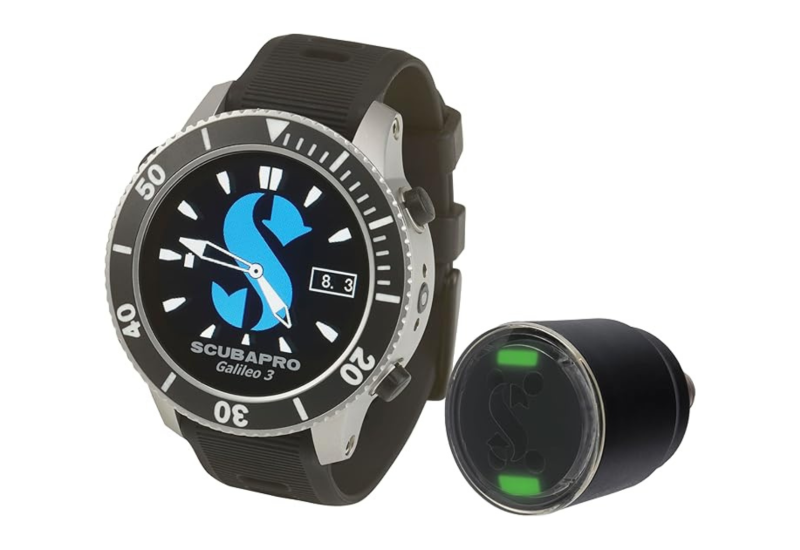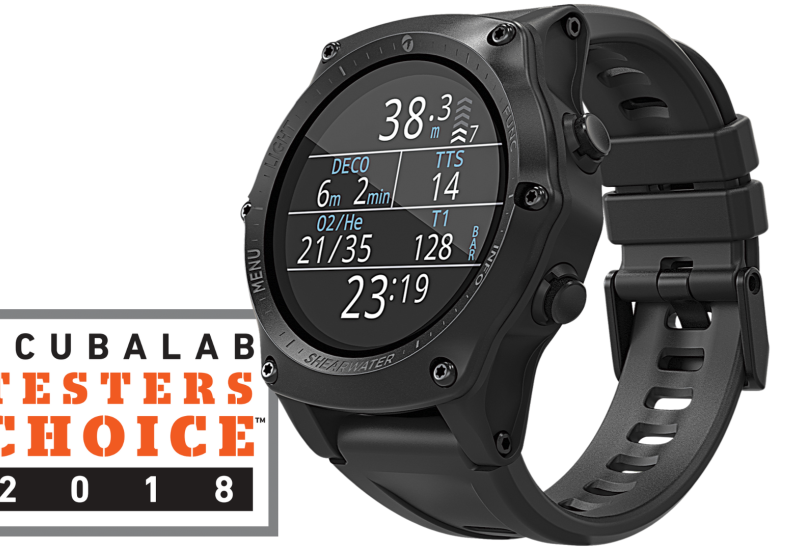ScubaLab's 2011 Gear of the Year: Dive Computers

Best Dive Computers of 2011
Carrie Garcia
**ScubaLab's 2011 Gear of the Year: **Dive Computers****
Today, divers can choose from a variety of dive computers, from affordable units that provide all the basic dive information, including nitrox capability to high-end systems offering features such as digital compasses, color screens and air-integration systems with remote transmitters or quick disconnect couplings to a regulator’s high-pressure hose. Not only have features advanced within the past decade, the consumer can also choose from full-function wristwatch-size computers to large-screen consoles that can be easily read under any condition. This year, three models earned ScubaLab's coveted Testers Choice, Best Buy and Editor's Choice designations.
**OCEANIC VT 4.0 **
$750, $1,195 w/ optional transmitter
Featuring a wide array of user settings at a reasonable price, Oceanic’s new VT 4.0 was an easy selection for Testers’ Choice. The VT 4.0 includes a sweet-looking three-axis digital compass, the ability to monitor up to four transmitters, an intuitive interface and easy-to-read data display. Perhaps most impressive was the ability to change decompression algorithms — to make it more liberal or conservative — in a compact wrist-mounted package.
TUSA IQ-950 ZEN AIR
$949
Capable of programming and wireless switching of up to three transmitters with mixes up to 100 percent O2, the Zen Air is a full-featured computer that was the most liberal of the eight computers tested. The wrist-mounted computer’s data display was well liked by testers, who also appreciated the easily read tank-pressure indication and various bar graphs that line the screen edge. For night divers, the Zen Air’s highest-rated backlight illumination is a plus.
**CRESSI LEONARDO **
$325 (wrist), $445 (console)
The most conservative computer in the tests, Cressi’s module-based design allows the Leonardo to be mounted on either the wrist or as part of the console. The Leonardo’s low price tag made it a Best Buy, and yet it still has all the features a recreational diver would ever need, including nitrox capability and a 60-dive logbook. Though it doesn’t have an air-integration option, testers loved the main dive-screen layout, ease of programming and navigation.
For ScubaLab's complete dive computer testing results, go to Dive Computer Tests 2011.

Carrie GarciaWe test dive gear because you can't.
ScubaLab's 2011 Gear of the Year
Dive Computers
Today, divers can choose from a variety of dive computers, from affordable units that provide all the basic dive information, including nitrox capability to high-end systems offering features such as digital compasses, color screens and air-integration systems with remote transmitters or quick disconnect couplings to a regulator’s high-pressure hose. Not only have features advanced within the past decade, the consumer can also choose from full-function wristwatch-size computers to large-screen consoles that can be easily read under any condition. This year, three models earned ScubaLab's coveted Testers Choice, Best Buy and Editor's Choice designations.
OCEANIC VT 4.0
$750, $1,195 w/ optional transmitter
Featuring a wide array of user settings at a reasonable price, Oceanic’s new VT 4.0 was an easy selection for Testers’ Choice. The VT 4.0 includes a sweet-looking three-axis digital compass, the ability to monitor up to four transmitters, an intuitive interface and easy-to-read data display. Perhaps most impressive was the ability to change decompression algorithms — to make it more liberal or conservative — in a compact wrist-mounted package.
TUSA IQ-950 ZEN AIR
$949
Capable of programming and wireless switching of up to three transmitters with mixes up to 100 percent O2, the Zen Air is a full-featured computer that was the most liberal of the eight computers tested. The wrist-mounted computer’s data display was well liked by testers, who also appreciated the easily read tank-pressure indication and various bar graphs that line the screen edge. For night divers, the Zen Air’s highest-rated backlight illumination is a plus.
CRESSI LEONARDO
$325 (wrist), $445 (console)
The most conservative computer in the tests, Cressi’s module-based design allows the Leonardo to be mounted on either the wrist or as part of the console. The Leonardo’s low price tag made it a Best Buy, and yet it still has all the features a recreational diver would ever need, including nitrox capability and a 60-dive logbook. Though it doesn’t have an air-integration option, testers loved the main dive-screen layout, ease of programming and navigation.
For ScubaLab's complete dive computer testing results, go to Dive Computer Tests 2011.










